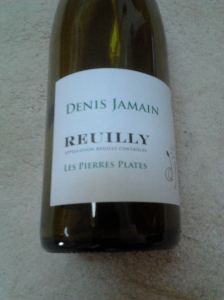I opened a delightful bottle of Pouilly-Fumé recently – or was it Pouilly-Fuissé? It’s easy to confuse these two which, like many European wines, are named according to their place of origin. This is fine if you know the areas concerned or have a Masters degree in Geography but, for most customers, wines with similar names are just a headache. Particularly when, as in this case, the two are very different from each other. I’ve tried for years to think of a mnemonic to help the wine students I teach to distinguish the two, but nothing – they just have to remember.
But the bottle I opened was definitely a Pouilly-Fumé, as the picture shows: Jean-Pierre Bailly’s classy ‘Les Griottes’ (Majestic, £16.99). A typical Sauvignon Blanc from France’s Loire Valley – crisp and fresh in style with zingy citrus flavours – lemon, pink grapefruit and a touch of mandarin. Far more restrained than many examples of the same grape from New Zealand, but still with plenty of character, no obvious oak and a long, smooth, dry finish. This one would pair well with an oily fish – mackerel or sardines, perhaps – or, as you would find in its native area, with a local chèvre (goats’ cheese).
A Pouilly-Fuissé would be totally different. Another popular French white, but this one made from Chardonnay grown in one of the warmest parts of southern Burgundy. Generally a medium- to full-bodied rich and creamy wine, perhaps with a hint of oak and full of peach, ripe pear and tropical fruit flavours. A perfect match for more generous dishes, especially those with creamy sauces, or soft cheeses.
So, that’s the Pouillys sorted – or is it? There is also Pouilly-Vinzelles and Pouilly-Loché (both similar to the Fuissé) and Pouilly-sur-Loire (a pleasant but simple wine from close to where the Fumé is made). Anyone thinking of enrolling in that Geography Masters?


